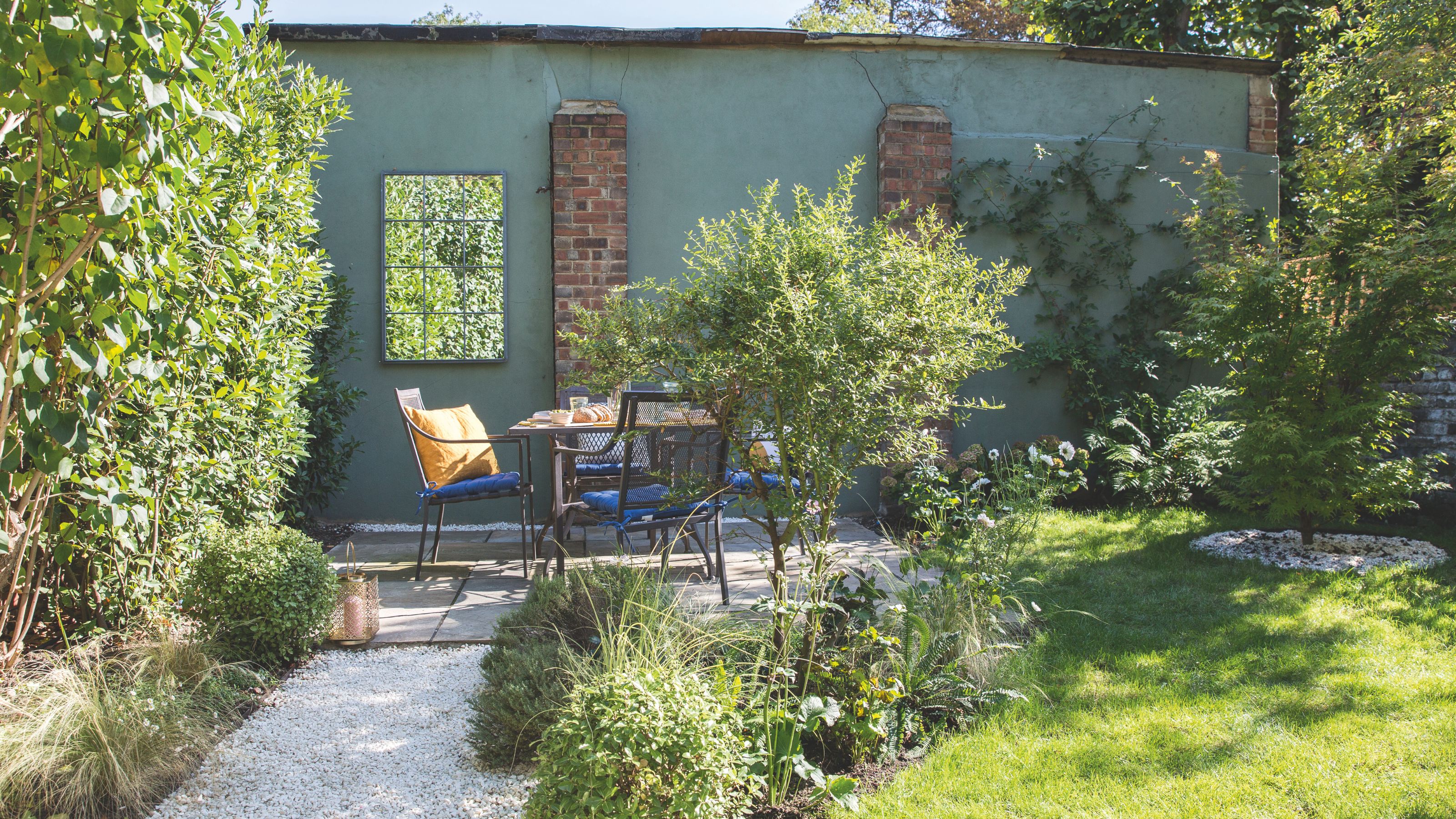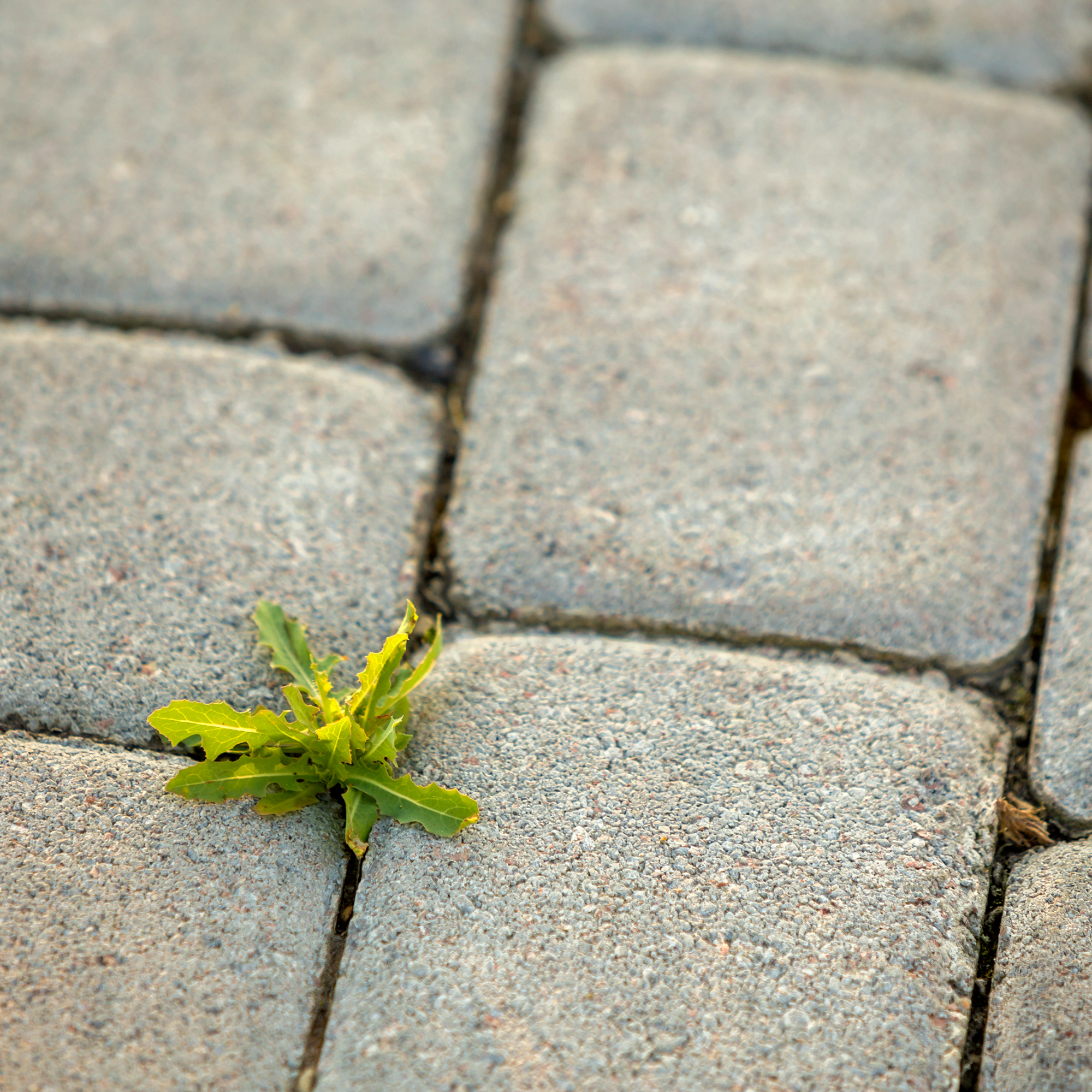How to remove weeds from a patio in 6 easy steps – from hand weeding to natural solutions
Keep your patio clear with these simple weeding solutions


Sophie King
EDITOR’S NOTE: An earlier version of this article included a quote from a purported expert whose credentials we have not been able to verify. The quote has been removed. We regret this lapse in our verification process and have updated our internal protocols to reduce the risk of recurrence.
It's that time of the year when many of us will be wondering how to remove weeds from a patio, so it's the perfect opportunity to brush up on a few weed removal techniques.
Luckily, just as you can learn how to kill weeds in other areas of the garden, you can rescue your patio ideas from these unwanted plants too. The cracks and gaps between our pavers provide optimal conditions for weeds to take up residence in our gardens, but thankfully, there are a few ways to keep numbers at bay.
To help you figure out how to remove weeds from a patio successfully, we've rounded up the best solutions.
What you'll need to remove weeds from patio
- A block paving knife, like the Spear & Jackson Enhanced Telescopic Patio Knife from Amazon
- White vinegar, like the Miniml Eco-Friendly White Vinegar from Amazon
- Salt
- Rubber gloves, like these SEEP Rubber Gloves from Amazon
- Non-toxic weed killer, like this KinderPet® Eco Weed Killer from Amazon
Step-by-step
1. Remove weeds with a paving knife

One of the most common methods for removing weeds from a patio is weeding by hand, and that usually involves a paving knife. It's a more natural way of getting rid of weeds, before you resort to store cupboard or chemical solutions.
'When it comes to removing weeds from your patio, using a block paving knife is bests,' says Paul Hicks, marketing & product manager at STIHL GB. 'Slice through weeds and remove any dirt trapped in the cracks, gathering and disposing of any waste.'
A block paving knife like the Kent and Stowe Carbon Steel Hand Weeding Knife from Amazon will allow you to dig up the weeds between the patio slabs by the root, which you'd otherwise struggle to do with your hands.
If you do weed by hand, you'll need to make sure you're removing the whole root. 'When hand weeding, the key is to remove each weed in its entirety,' explains Jamie Shipley, gardening expert and managing director at Hedges Direct. 'Hold the weed from the stem and gently remove the whole plant from the root system to make sure you have got it all out.
Sign up to our newsletter for style inspiration, real homes, project and garden advice and shopping know-how
2. Weed alongside a patio cleaner

To make life easier and kill two birds with one stone by cleaning your patio cleaner at the same time, you can use one of the best patio cleaners on the market in tandem with other manual weed removal methods.
‘We’d recommend first pulling out larger weeds and then leaving a patio cleaner on the surface for 24 hours,’ says Dr. Jonathan Kirby, Roxil’s paving expert. ‘Then, use a wet stiff brush to loosen any stubborn patches of mould, algae and dirt, before washing away the debris.’
Roxil's Wood and Patio Cleaner from Amazon is a brilliant choice.
3. Dispose of the weeds

You'll want to get rid of all the weeds you've pulled up before moving on to the next step.
Ideally, transfer all the weeds to a garden waste bin, or the regular bin if you don't have one. Some weeds can be composted, but this isn't advised for some types, so if you're unsure, it's best not to add them to your compost bin.
4. Make a solution to kill any remaining seeds

If you're keen to learn how to remove weeds from a patio so that they don't grow back, you'll need to create a solution that will kill any remaining seeds or roots.
A cost-effective method is to combine vinegar and salt, as these are powerfully active agents that will create an environment too hostile for weeds to grow back. The debate around whether salt kills weeds is an ongoing one, but many experts recommend it. A lot of garden pros recommend using white vinegar to kill weeds, too.
'Simply use a spray bottle and mix 4.5 litres of white vinegar with 600g of table salt and one tablespoon of dish soap,' says Jason Wilkinson, founder at Qwickhose .
5. Pour (or spray) in between the slabs

Next, pour your weedkiller solution into the gaps between the paving slabs. Pouring it neat will make sure enough of the solution gets in, but you can also use a spray bottle, as this will give you more control over where the solution goes.
It's really important that none of the solution touches any of your other plants, as this will harm their growth and likely kill a lot of them off.
6. Try a specialist weed killer product

If your homemade tonic didn't do the trick and you notice weeds growing on your patio again after a few weeks, you can try a special weed-killing product.
A lot of weed killers can be harmful to the surrounding environment, so it's important to look for eco-friendly products that won't damage your garden. Any weed killers with toxic chemicals also shouldn't be used around small children or pets, so a non-harmful alternative is the best bet all around.
With rubber gloves, apply your chosen weed killer to the weeds between your patio slabs according to the manufacturer's instructions. This should do an effective job at removing the weeds, both quickly and permanently.
FAQs
What is the fastest way to remove weeds from pavers?
Weedkillers are the fastest to remove weeds from pavers, as these are specially formulated to kill weeds at the root. Remember, it's important not to use a weed killer with any harmful chemicals on your patio, as it may run between the paving slabs and reach your other plants. Look for products marketed as non-toxic.
'Those with concrete paving stones can also use a pressure washer to blast away any weeds,' says Rowan from Infinite Paving. 'Just make sure to avoid using such a tool on pavers created from natural stone, such as limestone or sandstone, as this could damage them.'
Another quick way of learning how to remove weeds from patio that is also safe is to use boiling water.
What causes weeds to grow on patios?
'The space between patio and paving slabs is usually filled with rich and moist soil - the perfect environment for weeds,' explains Rowan. 'In addition, without any other plants to compete with in the space, it has the optimal conditions for the plants to secrete seeds and grow.'
Unfortunately, this means it can be difficult to learn how to remove weeds from patio. 'The weeds are capable of growing into, and or worsening, any cracks in a patio or paving stone,' says Rowan. 'Their seeds and roots are very small, meaning they are often undetectable.'
But, like knowing how to get rid of dandelions, it is possible to kill any weeds growing in your patio so that they don't come back. You will need some supplies to be able to do the job properly though.
And that's it! You've successfully learnt how to remove weeds from a patio, and you can focus on more enjoyable jobs, like revamping your patio decor ideas.

Katie has been writing freelance since early 2022, specialising in all things homes and gardens, following achieving a Masters in Media and Journalism. She started out writing e-commerce content for several of Future’s interior titles, including Real Homes, Gardeningetc, Livingetc, and Homes and Gardens. Since then she’s been a regular contributor on Ideal Home’s digital team, covering news topics, how-to guides, and product reviews.
- Sophie KingGardens Editor